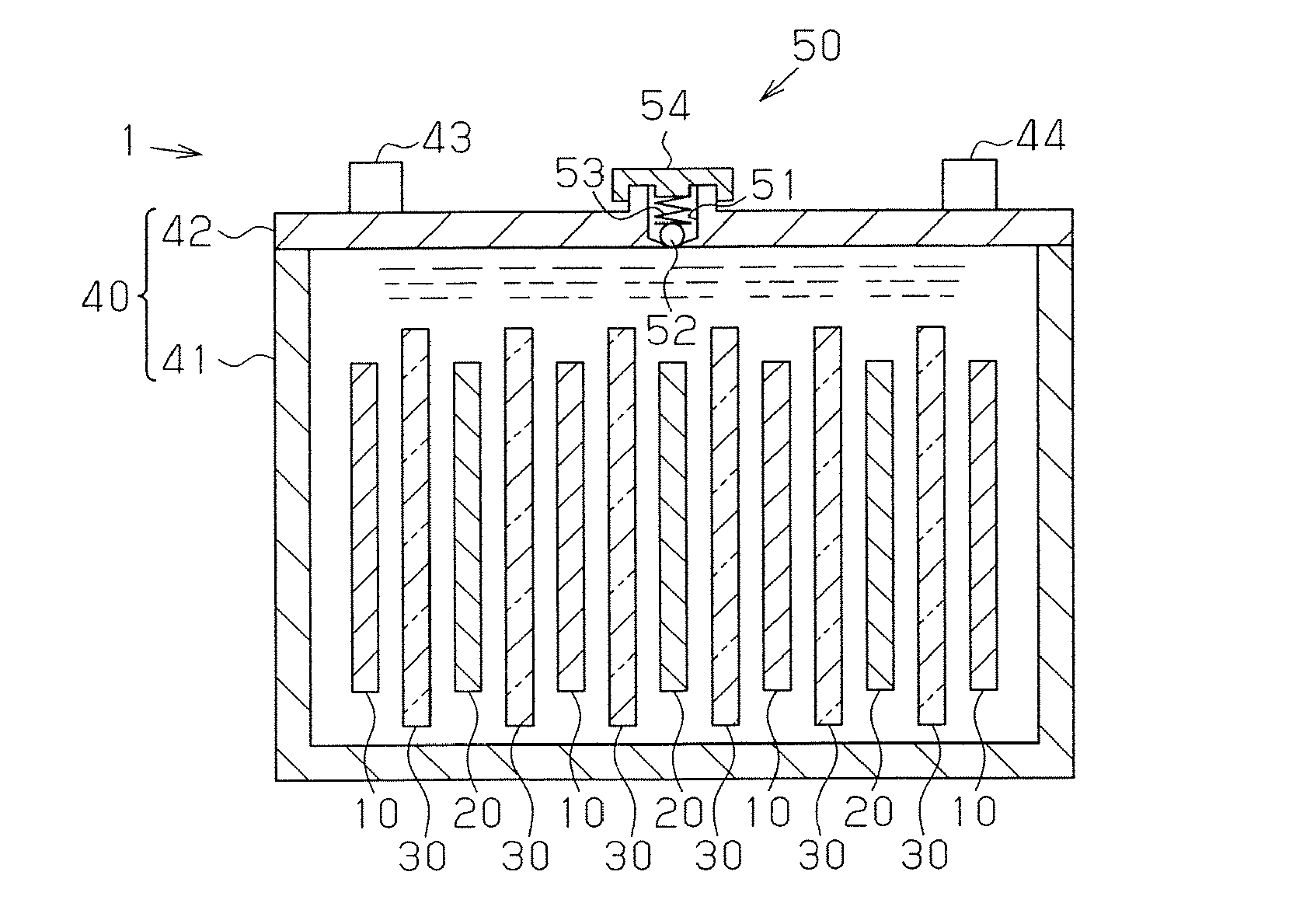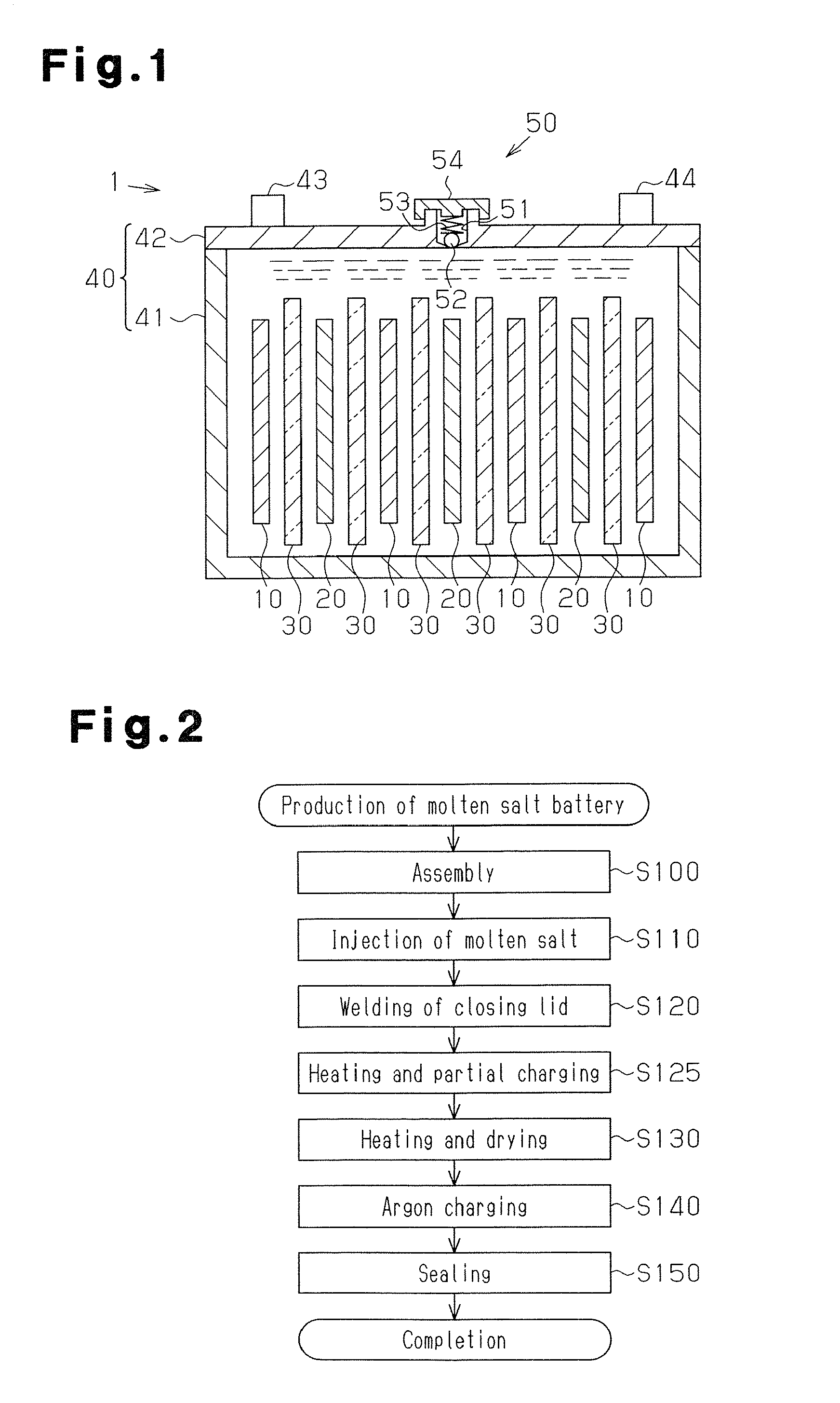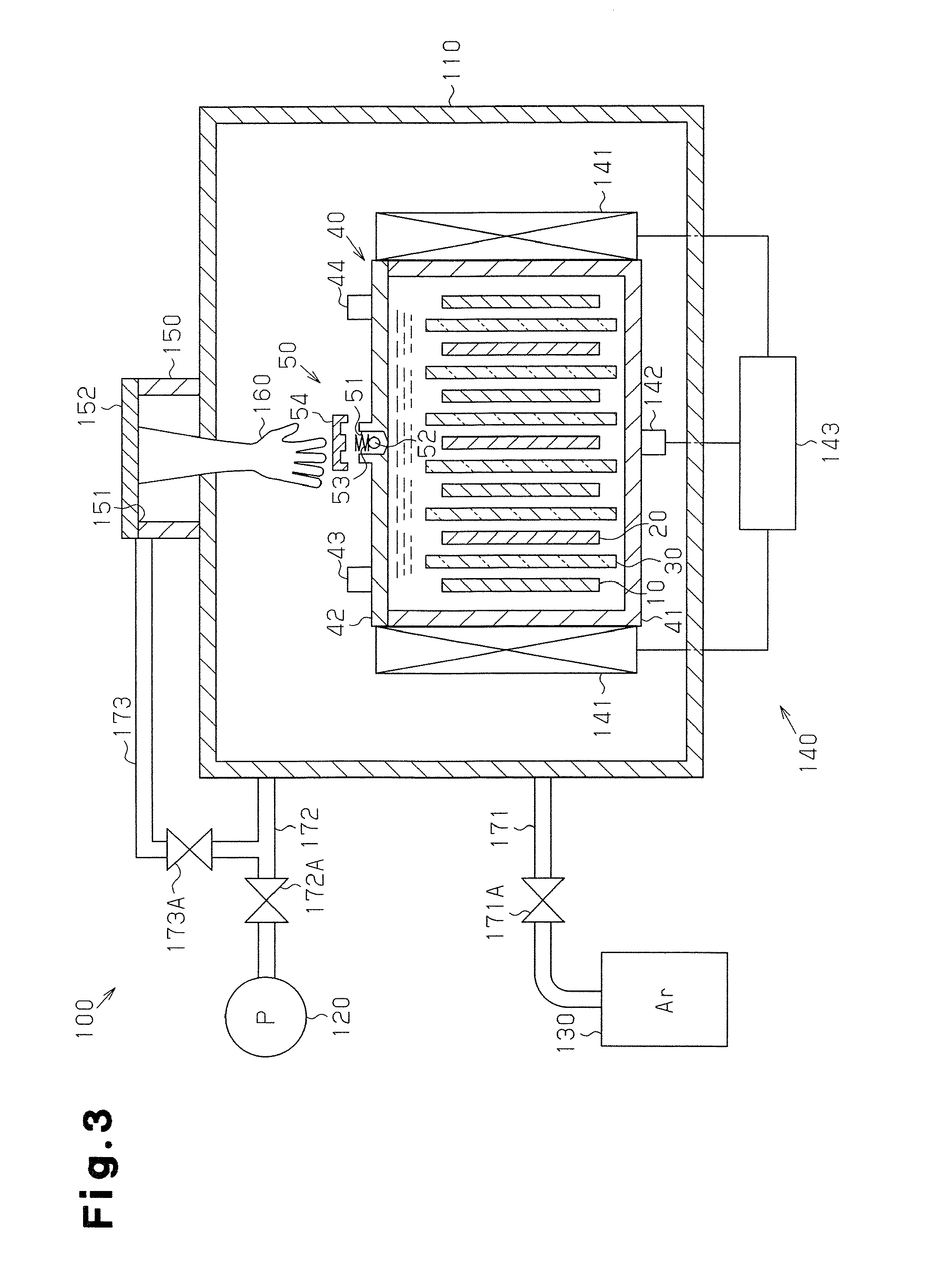Manufacturing method for molten salt battery and molten salt battery
a manufacturing method and technology for molten salt batteries, applied in the direction of cell components, final product manufacturing, sustainable manufacturing/processing, etc., can solve the problems of molten salts being affected by atmosphere and tools, molten salts are polar hygroscopic substances, and molten salts will absorb moisture, so as to reduce the water content inside the molten salt battery
- Summary
- Abstract
- Description
- Claims
- Application Information
AI Technical Summary
Benefits of technology
Problems solved by technology
Method used
Image
Examples
examples
[0081]The above-mentioned embodiment will now be explained in greater detail through the use of examples and comparative examples. However, the scope of the present invention is not limited to the examples.
[0082]The molten salt batteries of the examples were produced according to the method shown in FIG. 2 and FIG. 3. In addition, the molten salt batteries of the comparative examples were produced using a conventional method. In addition, both types of molten salt battery were compared and investigated in terms of molten salt battery characteristics.
[0083]NaCrO2 was used as the positive electrode, a Sn—Na alloy was used as the negative electrode, and a glass cloth having a thickness of 200 μm was used as the separator. A mixed salt of NaFSA and KFSA at a molar ratio of 56:44 was used as the molten salt electrolyte. Using these materials, the molten salt battery shown in FIG. 1 was produced as follows. Specifically, the molten salt batteries of the examples were produced using the pr...
PUM
| Property | Measurement | Unit |
|---|---|---|
| porosity | aaaaa | aaaaa |
| thickness | aaaaa | aaaaa |
| eutectic temperature | aaaaa | aaaaa |
Abstract
Description
Claims
Application Information
 Login to View More
Login to View More - R&D
- Intellectual Property
- Life Sciences
- Materials
- Tech Scout
- Unparalleled Data Quality
- Higher Quality Content
- 60% Fewer Hallucinations
Browse by: Latest US Patents, China's latest patents, Technical Efficacy Thesaurus, Application Domain, Technology Topic, Popular Technical Reports.
© 2025 PatSnap. All rights reserved.Legal|Privacy policy|Modern Slavery Act Transparency Statement|Sitemap|About US| Contact US: help@patsnap.com



